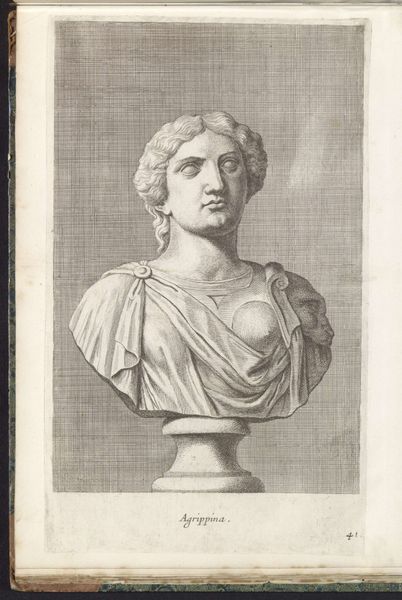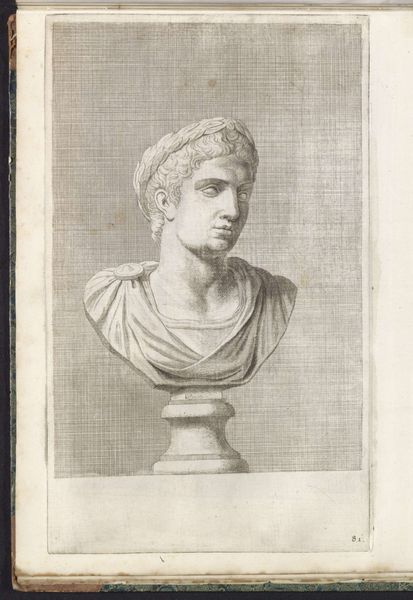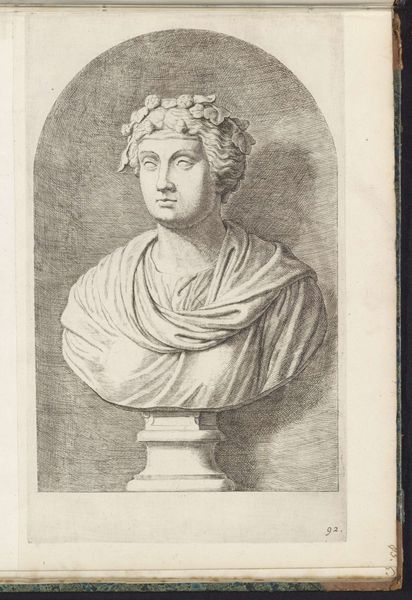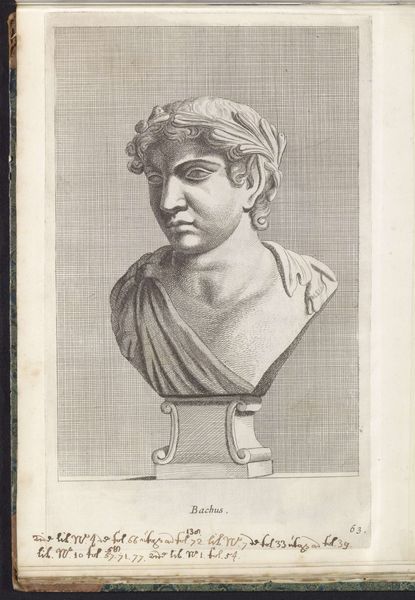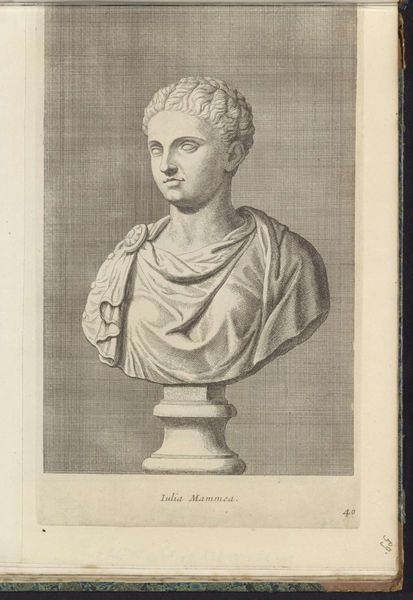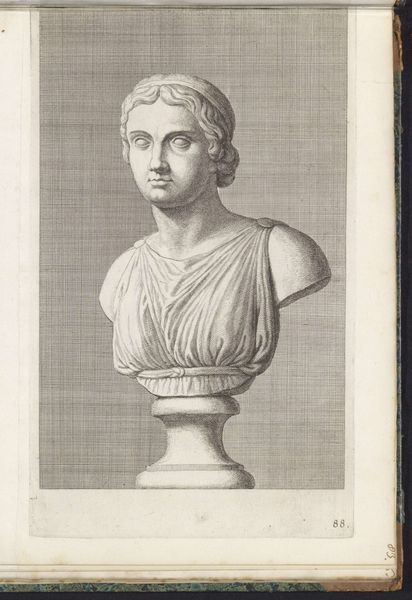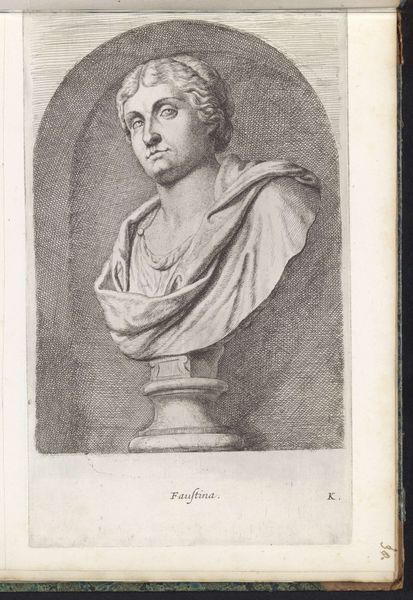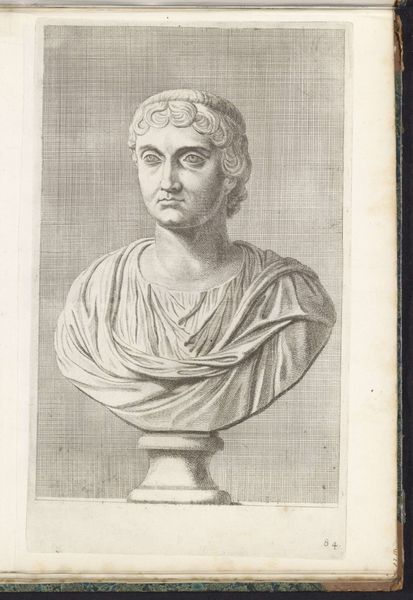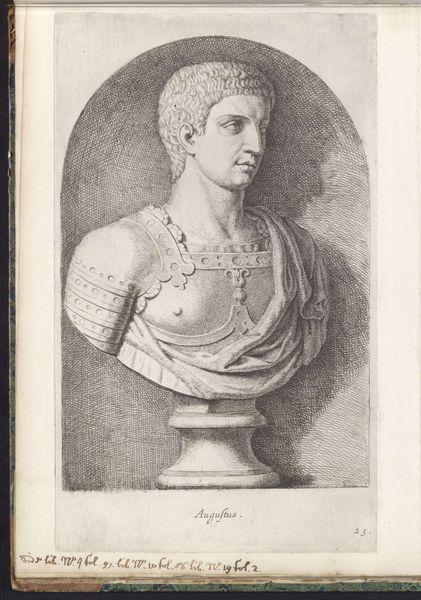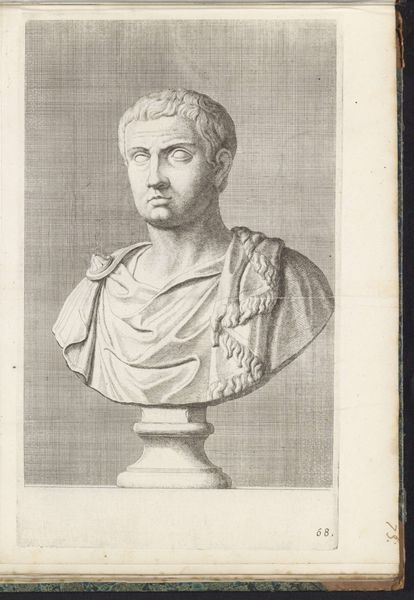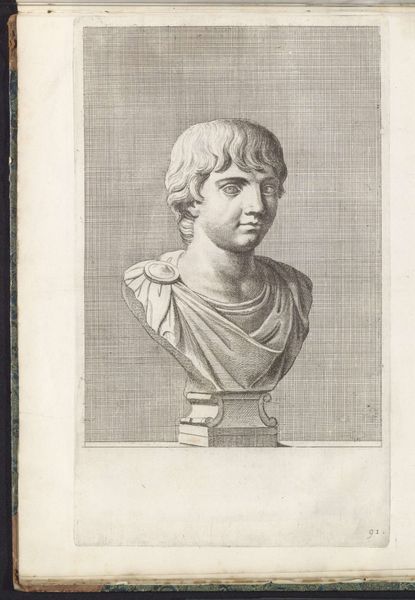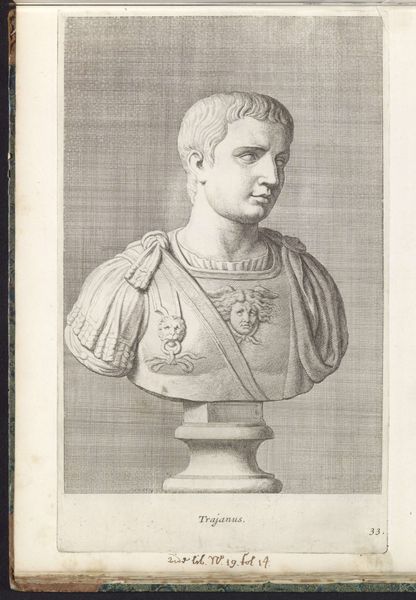
metal, engraving
#
portrait
#
baroque
#
metal
#
classical-realism
#
pencil drawing
#
portrait drawing
#
history-painting
#
engraving
Dimensions: height 327 mm, width 197 mm
Copyright: Rijks Museum: Open Domain
Curator: We are standing before "Buste van Calpurnia Pisonis" an engraving by Hubert Quellinus, dating back to the period between 1646 and 1670, currently held in the collection of the Rijksmuseum. Editor: My immediate impression is one of detached coolness; the monochromatic rendering and the subject’s stoic expression create an aura of classicism devoid of sentimentality. It’s almost architectural. Curator: Indeed. Quellinus masterfully employs engraving to evoke the ideals of classical realism and the Baroque style. Observe how the sharp lines and precise rendering of form lend an air of intellectual rigor to the portrait, befitting its subject, Calpurnia Pisonis. Editor: Considering Quellinus's method, the process of engraving itself feels significant. Each deliberate mark, carved laboriously into the metal plate, reinforces that feeling. It seems very disconnected from any expression of touch or emotion, it's the result of skill and patience. What type of person owned this book? What statement are they making by keeping it? Curator: These kinds of portrait engravings were common in books depicting important figures of classical antiquity. This book becomes an artifact showcasing an era grappling with the legacy and lessons of history, but you bring up the crucial element of labor: each line, each shadow meticulously crafted, contributing to the final effect. We're not only contemplating the result but the labor that constitutes this effect. Editor: Absolutely. The choice of metal and the application of engraving – so methodical and precise – elevate labor and the artisan skill over a simple representational drawing. It's more than a drawing; it’s a declaration about craftsmanship, and control, which lends itself well to its historical context. Curator: The deliberate and structured approach echoes the rationalism of the period. Quellinus uses form and material to communicate, subtly emphasizing reason, knowledge, and artistic skill over fleeting emotionality. It's fascinating how a series of constructed formal choices give meaning to what is not present in the image, like a narrative or emotional response. Editor: Precisely. And while that austerity might initially feel cold, understanding its crafted nature enriches my experience, reminding me of the work and intentionality invested in crafting such images. Curator: A point well taken; considering that balance between formal rigor and material manifestation. Editor: Indeed, a deeper view of both craft and history always enriches.
Comments
No comments
Be the first to comment and join the conversation on the ultimate creative platform.
